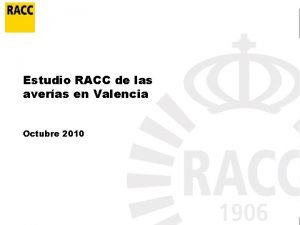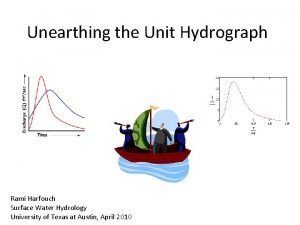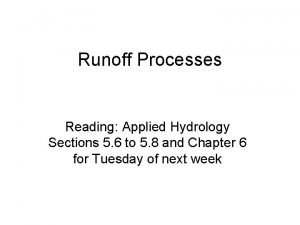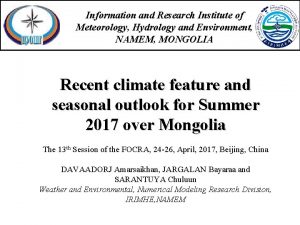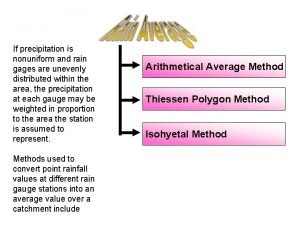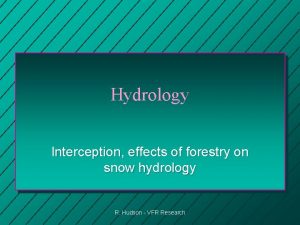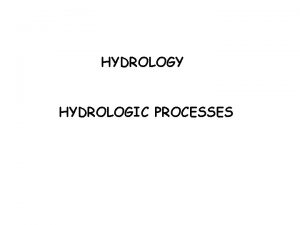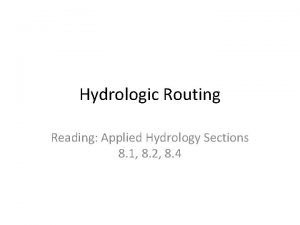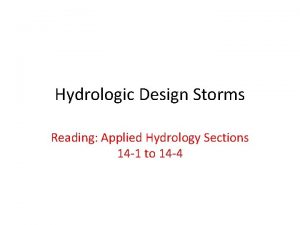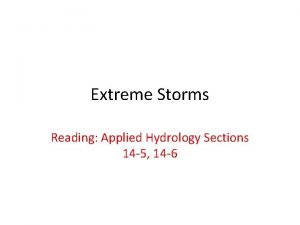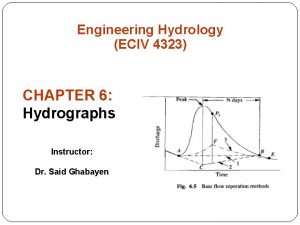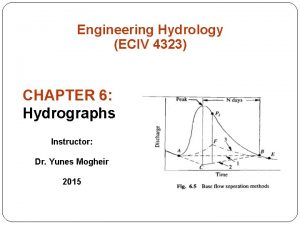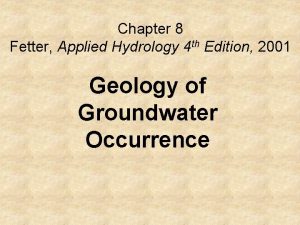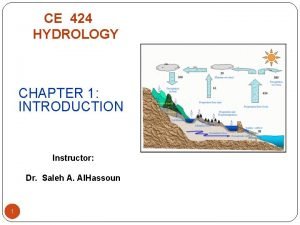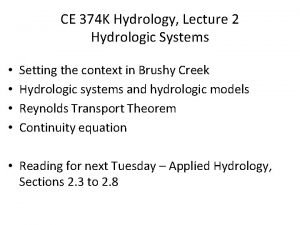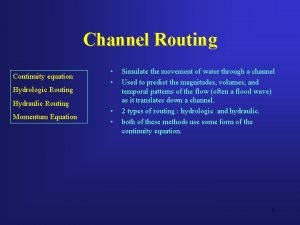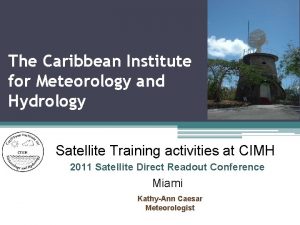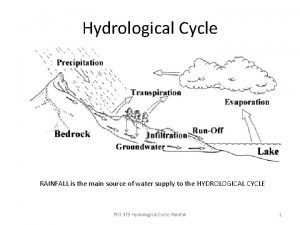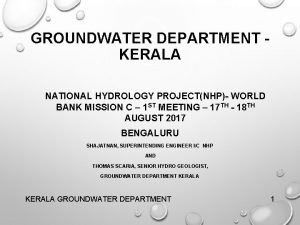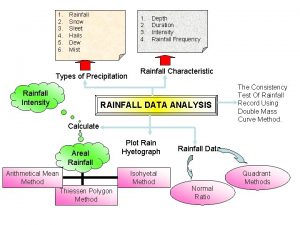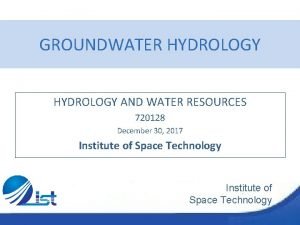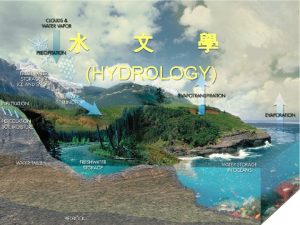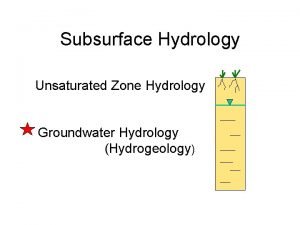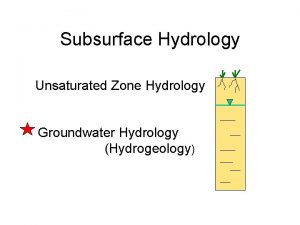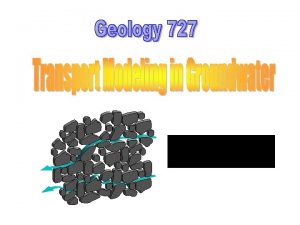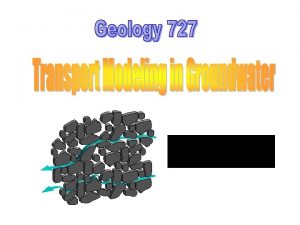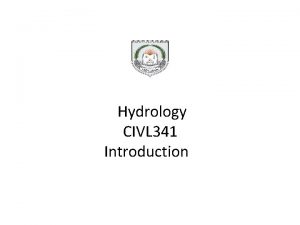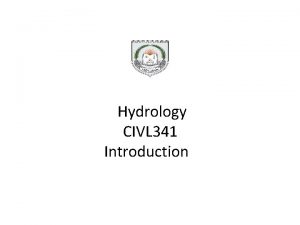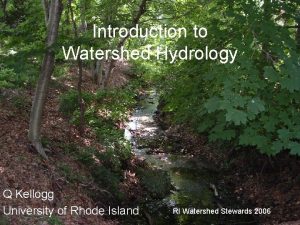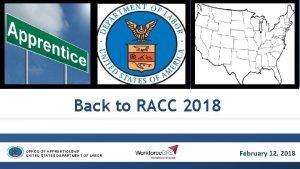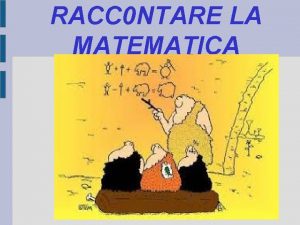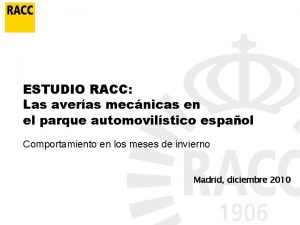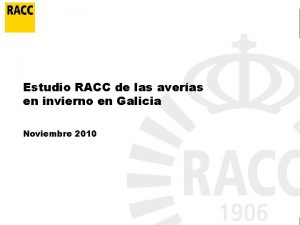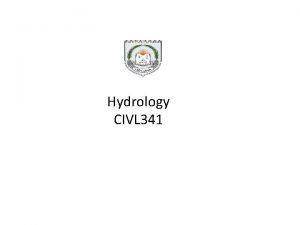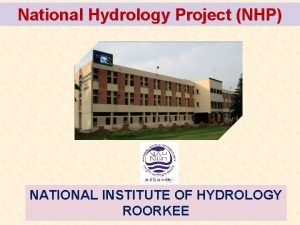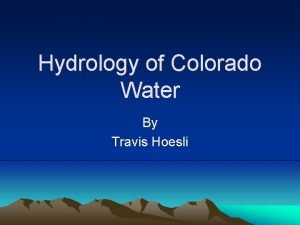Introduction to Watershed Hydrology RACC High School Training
































- Slides: 32

Introduction to Watershed Hydrology RACC High School Training June 26, 2012 Jody Stryker University of Vermont

What is a watershed? • An area of land that drains water, sediment, and dissolved materials to a common outlet. • Watershed are separated by drainage divides. • Can be any shape and size. • Sub-watershed = watershed within a watershed. LEGEND flow lines sub-watersheds Elevation “Watershed” = “catchment” = “drainage basin”

Within a watershed Image credit: Watershed Activities to Encourage Restoration, http: //www. watershedactivities. com/projects/fall/h 2 omodel. html

What happens downstream? Image credit: NOAA Figures show dead zone near mouth of Mississippi River, Gulf of Mexico. Image credit: APA News/NASA

Stream order Headwaters Confluences Outlet Image Credit: Developed by T. Endreny at SUNY ESF in the Department of Environmental Resources Engineering

Global hydrologic cycle Figure credit: URI Water Quality Home

Rainfall to runoff Precipitation Transpiration Interception by canopy • Groundwater flow • Subsurface flow (interflow) • Overland flow Evaporation Stem-flow Overland runoff Root uptake Infiltration Subsurface flow Groundwater flow Infiltration

Runoff pathways • Groundwater flow • Subsurface flow (interflow) • Overland flow Source: M. Ritter, The Physical Environment.

Surface runoff is affected by. . . Climate characteristics such as: • Type of precipitation • Rainfall intensity • Rainfall duration • Rainfall distribution • Antecedent precipitation and soil moisture • . . . Source: M. Ritter, The Physical Environment.

Surface runoff is affected by. . . Physical characteristics such as: • Land use • Vegetation • Soil • Basin shape • Elevation • Slope • Topography • Drainage patterns • . . . Source: M. Ritter, The Physical Environment.

… landforms reflect dominant runoff processes V-shaped valley of a humid, temperate landscape Photo credit: Field Studies Council, UK Badland topography of an arid landscape Photo credit: National Park Service

Effects of development on runoff Image credit: Minnesota Center fro Environmental Advocacy

Effects of development on runoff Image credit: Minnesota Center fro Environmental Advocacy Natural Landscape ü Low runoff ü High infiltration and recharge ü Healthy summer stream flow ü Natural pollutant treatment Developed - High runoff, low recharge - Lower water tables - Low stream flow -Nuisance flooding

Measuring river runoff Steps: 1. Measure stream stage (height of water surface). 2. Measure discharge. 3. Define relationship between stage and discharge. Image credit: Vermont EPSCo. R CWDD , http: //www. uvm. edu/~streams/index_old. php? Content=pages/2010_2011_Undergraduates

Measuring river runoff Steps: 1. Measure stream stage (height of water surface). Diagram of a typical USGS stream gage with stilling well. Image credit: The USGS Water Science School , http: //ga. water. usgs. gov/edu/streamflow 1. html

Measuring river runoff 2. Measure discharge. Discharge = velocity * width * depth Image credit: The USGS Water Science School , http: //ga. water. usgs. gov/edu/streamflow 2. html Steps:

Image credit: The USGS Water Science School , http: //ga. water. usgs. gov/edu/streamflow 3. html Measuring river runoff Steps: 3. Define relationship between stage and discharge.

Hydrograph • A way to look at the response of a watershed to hydrologic event • Discharge (cms/cfs) vs. time • Comprised of base flow and direct flow

Hydrograph pattern is the result of: Image credit: BBC: Intermediate Geography Rivers Watershed characteristics

Hydrograph pattern is the result of: Climate • Humid vs. arid • Previous rainfall Storm characteristics • Intensity • Duration • Spatial distribution of events Image credit: http: //echo 2. epfl. ch/VICAIRE/mod_1 a/chapt_2/main. htm

Image credit: Battle River Watershed Alliance, CA.

Stream channel morphology Image credit: Fisheries and Oceans Canada, http: //www. pac. dfo-mpo. gc. ca/habitat/Glossary-glossaire-eng. htm

Stream morphology and stream health Image credit: Vermont Water Quality Division

Climate change and hydrology • What climate related changes might we see?

Climate change and hydrology • What climate related changes might we see? Higher surface temperatures Reduced snowpack Increased drought conditions Increase in regional precipitation – Longer growing seasons – Greater frequency of extreme events – –

Climate change and hydrology • What climate related changes might we see? Higher surface temperatures Reduced snowpack Increased drought conditions Increase in regional precipitation – Greater frequency of extreme events – – • What hydrologic changes might we see?

Climate change and hydrology • What climate related changes might we see? Higher surface temperatures Reduced snowpack Increased drought conditions Increase in regional precipitation – Greater frequency of extreme events – – • What hydrologic changes might we see? – Higher runoff – More erosion – Increased transportation of dissolved materials – Increased flooding frequency and/or magnitude – Geomorphic channel adjustments – More altered landscapes – Higher water demand

Climate change, hydrology, new challenges Image credit: Vermont Watershed Management Division Image credit: Vermont Agency for Natural Resources Image credit: Vermont Watershed Management Division

Hydrologic effects of deforestation/development Image credit: USGS, http: //ga. water. usgs. gov/edu/watercyclerunoff. html

An experiment • Sprinkle rainfall on “forested” watershed – collect runoff in cup • Deforest and develop your watershed • Sprinkle rainfall on “developed” watershed – collect runoff in cup

An experiment In each case consider: • How much of rainfall runs off? • How long before runoff begins at the bottom of the watershed? • What happens when rainfall stops?

Why does land use matter? Influences how much water runs off Influences how and where water runs off
 Ragc asistencia duoc
Ragc asistencia duoc The unwanted roomatr
The unwanted roomatr High school introduction paragraph
High school introduction paragraph Introduction paragraph examples high school
Introduction paragraph examples high school Applied hydrology
Applied hydrology Scs method
Scs method Meteorology hydrology and water management
Meteorology hydrology and water management Arithmetic mean rainfall
Arithmetic mean rainfall Hydrosphere unit test answers
Hydrosphere unit test answers Drh in hydrology
Drh in hydrology Interception hydrology
Interception hydrology Applied hydrology
Applied hydrology Hydrograph
Hydrograph Hyteograph
Hyteograph Applied hydrology
Applied hydrology The basic assumptions of unit hydrograph theory are
The basic assumptions of unit hydrograph theory are Drh in hydrology
Drh in hydrology Applied hydrology
Applied hydrology Hydrology continuity equation
Hydrology continuity equation Qg 424
Qg 424 Applied hydrology
Applied hydrology Bernoulli equation hydrology
Bernoulli equation hydrology Branches of hydrology
Branches of hydrology Continuity equation hydrology
Continuity equation hydrology Continuity equation hydraulics
Continuity equation hydraulics Caribbean weather satellite
Caribbean weather satellite Hydrology lecture
Hydrology lecture Hydrology is science which deals with
Hydrology is science which deals with Quadrant method hydrology
Quadrant method hydrology Hydrology department kerala
Hydrology department kerala Isohyetal method procedure
Isohyetal method procedure Design storm in hydrology
Design storm in hydrology Groundwater
Groundwater
